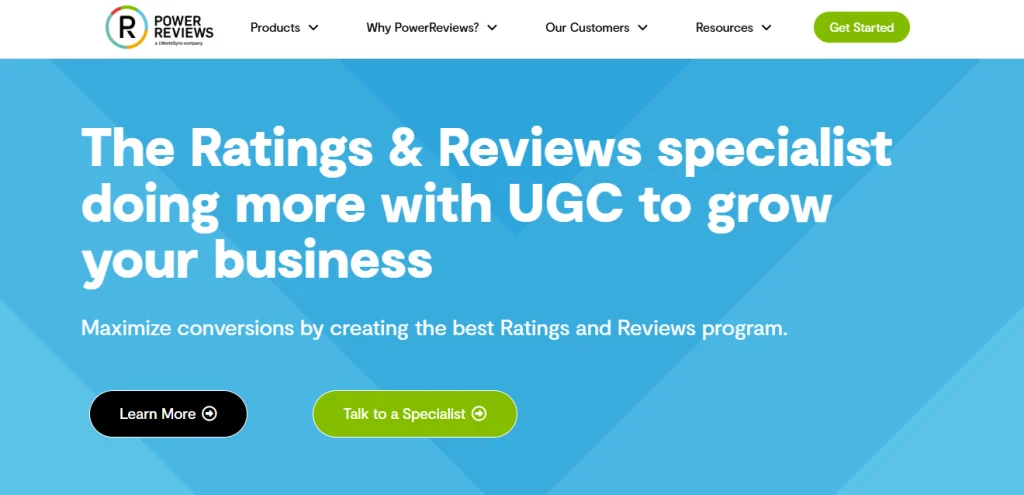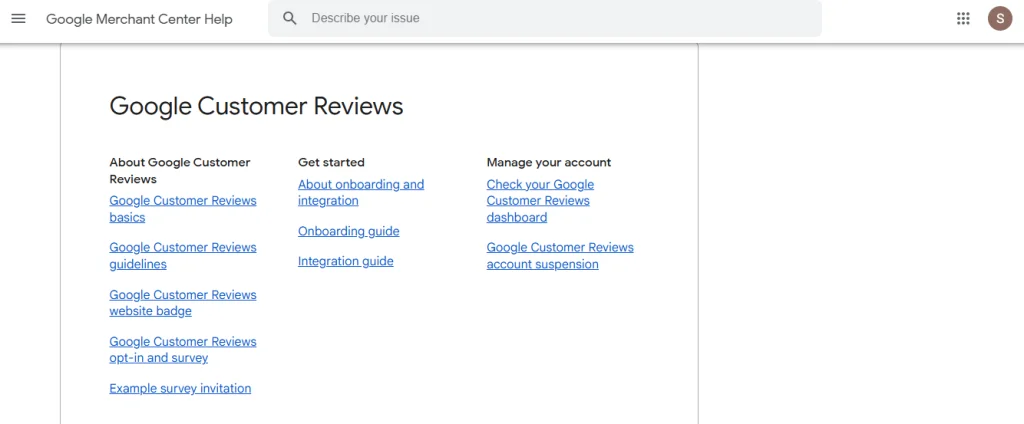
Best Ecommerce Reviews and Ratings Management Tools, & Strategies
Customer feedback and ratings have become crucial components that can make or destroy a firm in the fiercely competitive eCommerce industry. Online retail relies heavily on these digital word-of-mouth recommendations, which have an impact on everything from sales results to brand reputation. As 2025 approaches, the importance of reviews and ratings will only increase due to changing consumer demands and the quick development of technology.
The dynamics of ratings and reviews have changed over time. A complex system of user-generated material, enhanced by multimedia components like photos and videos, has replaced what started as straightforward star ratings and informed comments. This change has been fueled by consumers’ growing need for transparency and authenticity as they pick and choose which brands to interact with.
This thorough manual will look at how eCommerce companies can handle reviews and ratings in 2025 in this in-depth guide. This blog will offer insights into every facet of review and rating administration, from comprehending how consumer input affects brand perception to utilizing state-of-the-art tools for review management. We’ll also explore upcoming trends, providing an overview of what eCommerce reviews and ratings might look like in the future.
The Impact of Reviews and Ratings on eCommerce Success
Because they increase credibility, influence purchasing decisions, and foster trust, reviews, and ratings are essential to eCommerce success. Sales are increased by positive comments, and transparency is improved by sincere customer thoughts. High ratings are crucial for the growth and reputation of a company because they raise search ranks and draw in new customers.

The Role of Customer Feedback in Shaping Brand Perception
Customer feedback is a powerful force in the eCommerce world. Reviews and ratings are more than just a collection of opinions; they are a reflection of your brand’s reputation and credibility. When potential customers browse through your website, one of the first things they look for is social proof. Positive reviews can significantly enhance your brand’s image, instilling trust and confidence in your products or services.
A high volume of positive reviews creates a positive feedback loop. As more customers leave glowing reviews, others are encouraged to make purchases, leading to increased sales. Conversely, negative reviews can have a detrimental effect, deterring potential customers and damaging your brand’s reputation. Therefore, managing customer feedback effectively is crucial for maintaining a positive brand perception.
The SEO Benefits of Managing Reviews and Ratings Effectively
In addition to influencing brand perception, reviews and ratings also play a critical role in search engine optimization (SEO). User-generated content, such as reviews, is a valuable asset for improving your website’s SEO performance. Search engines like Google prioritize fresh and relevant content, and reviews provide a constant stream of new information that can help your website rank higher in search results.
Reviews with relevant keywords can boost your SEO by improving your site’s visibility in search results, leading to higher click-through rates and more organic traffic. Similarly, high ratings enhance your presence in rich snippets, making your listing more attractive and increasing website traffic.
Social Proof and Its Influence on Consumer Behavior
Social proof in eCommerce refers to using reviews and ratings to influence buying decisions. Positive feedback reduces perceived risks and builds trust, making customers more likely to purchase. Negative reviews, however, can deter buyers, highlighting the need to actively manage and maintain strong social proof.
| S. No. | Names | Pricing | Best For | Free Version |
| 1 | Yotpo | Starts at $15/month (custom pricing for advanced features) | Collecting and displaying product reviews, loyalty programs, and integrations with Shopify & BigCommerce | Yes, with limited features |
| 2 | Trustpilot | Free plan available; Paid plans start at $225/month | Building brand trust through verified reviews and Google Seller Ratings | Yes |
| 3 | PowerReviews | Custom pricing (based on business size and needs) | Enterprise-level review collection, syndication, and visual content | No, demo available |
| 4 | Feefo | Starts at $119/month | Verified customer reviews with analytics and integration options | No, but offers a 14-day trial |
| 5 | Google Customer Reviews | Free | Collecting seller ratings for Google Ads and organic search listings | Yes |
Top eCommerce Review and Rating Management Tools for 2025
The best eCommerce review and rating management platform for 2025 is Judge.me, Yotpo, Feefo, Trustpilot, and PowerReviews. These systems assist companies in gathering, organizing, and showcasing client feedback to increase conversions and trust. Credibility and consumer involvement are increased by features like sentiment monitoring, automated review requests, and eCommerce platform connection.
Yotpo
Yotpo is a comprehensive platform that helps businesses collect, curate, and manage customer reviews and ratings. With its robust set of features, Yotpo enables businesses to leverage customer content across various marketing channels, enhancing brand credibility and driving sales.

Yotpo’s automated review requests ensure a steady flow of feedback from customers, while its multi-channel review display capabilities allow businesses to showcase reviews on their websites, social media, and other platforms. The platform’s AI-powered insights provide valuable data on customer sentiment, helping businesses make informed decisions and optimize their offerings.
By integrating with popular eCommerce platforms, Yotpo ensures a seamless experience for businesses looking to enhance their review management processes. The platform’s ability to leverage customer content for marketing purposes further strengthens its value proposition, making it a top choice for eCommerce businesses in 2024.
Trustpilot
Trustpilot is a popular review management tool known for its strong focus on transparency and authenticity. The platform allows businesses to collect and showcase customer reviews, helping to build trust with potential customers and improve online visibility.

Trustpilot offers a range of features designed to enhance the review collection process, including customizable review invitations and SEO-optimized review pages. The platform’s integration with social media allows businesses to amplify their positive reviews, reaching a wider audience and boosting brand reputation.
One of Trustpilot’s key strengths is its commitment to authenticity. The platform takes measures to ensure that reviews are genuine and reflective of real customer experiences. This focus on transparency helps businesses build trust with their audience, ultimately leading to increased sales and customer loyalty.
PowerReviews
PowerReviews is a versatile tool that provides solutions for collecting and displaying reviews, ratings, and user-generated content across eCommerce sites. The platform’s emphasis on visual content, such as photo and video reviews, sets it apart from other review management tools.

PowerReviews’ features include review collection and display, Q&A sections, and in-depth analytics. The platform’s ability to showcase visual content helps create a more engaging shopping experience, which can significantly improve conversion rates.
The analytics offered by PowerReviews provide valuable insights into customer behavior, allowing businesses to tailor their offerings to meet customer needs. By leveraging visual content and data-driven insights, PowerReviews helps businesses create a compelling and trustworthy online presence.
Feefo
Feefo is a review management tool that emphasizes verified reviews, ensuring that the feedback businesses receive is credible and trustworthy. The platform’s focus on authenticity helps build consumer trust, which is crucial for success in the eCommerce space.

Feefo’s features include verified customer reviews, feedback requests via email and SMS, performance insights, and fraud detection. The platform’s analytics help businesses understand customer behavior and identify areas for improvement.
By prioritizing verified reviews, Feefo ensures that businesses can confidently showcase customer feedback to potential buyers. This focus on credibility can significantly enhance brand trust and drive customer loyalty.
Google Customer Reviews
Google Customer Reviews is a valuable tool for businesses looking to collect feedback from customers directly through Google. The platform’s integration with Google Seller Ratings allows businesses to display ratings in Google Search and Shopping, improving visibility and attracting more customers.

Google Customer Reviews offers customizable surveys that can be sent to customers after a purchase, providing businesses with valuable feedback. The platform’s review aggregation feature ensures that customer feedback is easily accessible and actionable.
By improving search engine visibility and building trust with potential customers, Google Customer Reviews can play a crucial role in the success of eCommerce businesses in 2024.
Key Benefits of Using Review and Rating Management Tools
Review and rating management tools are designed to alleviate these difficulties by offering several key benefits. They automate the collection and response processes, saving time and reducing manual effort.
These tools centralize reviews from multiple platforms, providing a unified view of customer feedback and trends. By enabling prompt and efficient responses, they enhance customer relationships and satisfaction. Advanced analytics offer insights into customer sentiment, guiding data-driven improvements.
Additionally, these tools help maintain review authenticity by filtering out fake feedback. As your business scales, review management tools grow with you, handling increasing volumes of reviews seamlessly, ensuring consistent and effective management throughout your business’s growth.
Efficiency
The efficiency offered by review and rating management tools is a game-changer for eCommerce businesses struggling to keep up with the volume of customer feedback. These tools automate various aspects of the review management process, from sending out review requests to responding to customer comments. Additionally, reliable ecommerce hosting ensures smooth performance, fast loading times, and secure data handling, enhancing the overall customer experience.
Automated review requests are particularly valuable as they ensure that customers are asked to provide feedback shortly after their purchase, when their experience is still fresh. This automation reduces the need for manual follow-ups and allows businesses to maintain a consistent flow of reviews without dedicating extensive resources to the task. Additionally, review management tools can automate responses to common types of feedback, such as acknowledging positive reviews or addressing frequently encountered issues, further saving time and effort.
By streamlining these processes, businesses can focus on more strategic activities, such as analyzing review data and making improvements based on customer feedback. Automation not only enhances operational efficiency but also ensures that customer interactions are handled promptly, contributing to overall customer satisfaction and operational productivity.
Centralization
Centralization is a significant benefit of using review and rating management tools, especially for eCommerce businesses that receive feedback across various platforms. These tools consolidate reviews from multiple sources—such as Google, Yelp, Amazon, and social media—into a single, unified dashboard.
This centralized view allows businesses to monitor all feedback in one place, making it easier to track trends and manage reviews effectively. Instead of logging into each platform separately, businesses can access all their reviews through a single interface, streamlining the process of responding to comments and addressing any issues that arise.
Centralization also provides a comprehensive view of customer sentiment across different channels. This holistic perspective enables businesses to identify patterns in feedback, whether they pertain to specific products, services, or overall customer experience. By having all reviews in one location, businesses can make more informed decisions and address any recurring problems more efficiently.
Improved Customer Relationships
Building and maintaining positive customer relationships is crucial for the success of any eCommerce business. Review and rating management tools play a key role in enhancing these relationships by enabling timely and effective responses to customer feedback.
Promptly addressing customer reviews—whether positive or negative—demonstrates that a business values customer input and is committed to improving their experience. Tools that facilitate quick responses allow businesses to acknowledge positive feedback, express gratitude, and reinforce customer loyalty. For negative reviews, timely responses can help resolve issues, show empathy, and offer solutions, potentially turning a dissatisfied customer into a loyal advocate.
By engaging with customers through reviews, businesses can foster a sense of trust and satisfaction. Efficient management of feedback also ensures that customers feel heard and valued, which is essential for long-term loyalty and repeat business. Overall, improved customer relationships contribute to a stronger brand reputation and enhanced customer retention.
Insights and Analytics
Review and rating management tools provide advanced analytics that offer valuable insights into customer sentiment and behavior. These analytics are instrumental in understanding how customers perceive your products and services, tracking trends over time, and making data-driven decisions.
Tools often include features such as sentiment analysis, which helps businesses gauge overall customer satisfaction by analyzing the tone and content of reviews. This can highlight areas where the business excels or needs improvement. Trend tracking capabilities allow businesses to monitor changes in feedback patterns, such as emerging issues or shifts in customer preferences, enabling proactive adjustments to their offerings.
Furthermore, detailed reporting tools can generate comprehensive reports on review performance, customer demographics, and feedback trends. By leveraging these insights, businesses can make informed decisions about product development, marketing strategies, and customer service improvements, ultimately enhancing the overall customer experience and driving growth.
Strategies for Encouraging Genuine Customer Reviews
Encouraging genuine customer reviews involves creating a seamless and straightforward review process. Simplify the review submission steps and ensure your system is mobile-friendly to capture feedback from on-the-go customers. Offer incentives like discounts or loyalty points while emphasizing the importance of honest feedback.
Leverage post-purchase communications, such as follow-up emails or SMS, to remind customers to leave reviews. Timing is crucial—ask for reviews shortly after purchase when the experience is still fresh. By making the process easy and encouraging sincerity, you can gather valuable and authentic customer insights.
Creating a Seamless Review Collection Process
One of the most effective ways to encourage genuine customer reviews is by creating a seamless review collection process. The easier it is for customers to leave a review, the more likely they are to do so. This begins with optimizing the review submission process, ensuring that it is user-friendly and accessible across all devices.
Mobile optimization is particularly important in today’s digital landscape, where a significant portion of eCommerce transactions take place on smartphones and tablets. A responsive review form that loads quickly and is easy to navigate can significantly increase the likelihood of customers leaving feedback.
In addition to optimizing the submission process, businesses should consider timing their review requests strategically. Sending a review request shortly after a customer has received their product ensures that the experience is fresh in their mind, increasing the chances of a detailed and accurate review.
Offering Incentives Without Compromising Authenticity
Incentives can be a powerful motivator for encouraging customers to leave reviews. However, it is important to strike a balance between incentivizing feedback and maintaining authenticity. Offering rewards in exchange for reviews, such as discounts or loyalty points, can encourage more customers to share their experiences. However, businesses must ensure that the incentives do not influence the content of the reviews.
One effective strategy is to offer incentives for all reviews, regardless of whether they are positive or negative. This approach encourages honest feedback while still motivating customers to participate. Businesses should also be transparent about their incentive programs, making it clear to customers that their reviews should reflect their genuine experiences.
Responding to Reviews to Foster Engagement
Engagement is a key factor in building long-term relationships with customers, and responding to reviews is an essential part of this process. When businesses take the time to acknowledge and respond to customer feedback, it shows that they value their customer’s opinions and are committed to improving their products and services.
Positive reviews provide an opportunity to express gratitude and reinforce customer loyalty. A simple thank you message can go a long way in making customers feel appreciated. On the other hand, negative reviews should be addressed promptly and professionally. Businesses should acknowledge the customer’s concerns, apologize if necessary, and offer a solution or compensation if appropriate.
By actively engaging with customers through reviews, businesses can turn potentially negative experiences into positive ones and build a community of loyal customers who feel heard and valued.
Leveraging User-Generated Content for Social Proof
User-generated content (UGC) is a powerful form of social proof that can enhance your brand’s credibility and attract new customers. Reviews, ratings, and testimonials are all forms of UGC that can be leveraged across various marketing channels to build trust and drive sales.
To make the most of UGC, businesses should consider showcasing customer reviews and ratings on their website, social media platforms, and in email marketing campaigns. Featuring real customer experiences adds authenticity to your marketing efforts and provides potential customers with the reassurance they need to make a purchase.
In addition to text-based reviews, visual content such as photos and videos shared by customers can have a significant impact on consumer behavior. Encouraging customers to share their experiences through visual content and incorporating it into your marketing strategy can create a more engaging and trustworthy brand presence.

Best Practices for Managing Negative Reviews
Effectively managing negative reviews involves promptly addressing concerns with empathy and professionalism. Acknowledge the customer’s experience, offer a resolution or corrective action, and maintain a positive tone in responses.
Use negative feedback as an opportunity to improve products or services, and monitor trends to prevent recurring issues. Transparency and constructive engagement can turn negative experiences into positive outcomes, enhancing your brand’s reputation and customer loyalty.
Addressing Negative Feedback with a Proactive Approach
Negative reviews are an inevitable part of running an eCommerce business, but how you handle them can make all the difference. A proactive approach to managing negative feedback involves addressing issues head-on and turning dissatisfied customers into brand advocates.
The first step in addressing negative feedback is to acknowledge the customer’s concerns and apologize for any inconvenience they may have experienced. It’s important to remain empathetic and avoid being defensive, as this can further escalate the situation.
Once you’ve acknowledged the issue, work with the customer to find a solution. This could involve offering a refund, replacement, or discount on future purchases. By going above and beyond to resolve the issue, you can demonstrate your commitment to customer satisfaction and potentially turn a negative experience into a positive one.
Turning Negative Reviews into Opportunities for Improvement
While negative reviews can be disheartening, they also provide valuable insights into areas where your business can improve. Instead of viewing negative feedback as a setback, consider it an opportunity to learn and grow.
Analyzing negative reviews can help you identify recurring issues or pain points that customers are experiencing. This information can be used to make necessary changes to your products, services, or processes, ultimately leading to a better customer experience.
In addition to improving your offerings, responding to negative reviews in a constructive manner can enhance your brand’s reputation. Potential customers who see that you take feedback seriously and are committed to making improvements are more likely to trust your brand and make a purchase.
Building a Strategy for Managing Fake Reviews
Fake reviews are a growing concern in the eCommerce industry, as they can distort the perception of your brand and mislead potential customers. Developing a strategy for managing fake reviews is essential for maintaining the integrity of your review system.
One of the first steps in combating fake reviews is to implement a verification process for all reviews. This could involve requiring customers to provide proof of purchase before leaving a review or using review management tools that automatically detect and flag suspicious activity.
In addition to verification, businesses should actively monitor their reviews for any signs of fraudulent behavior. If a fake review is identified, it should be reported and removed promptly. Transparency is key in dealing with fake reviews, so consider communicating with your customers about the steps you’re taking to ensure the authenticity of your reviews.
Implementing a Review Moderation Process
Review moderation is an important aspect of managing customer feedback, as it helps ensure that reviews are appropriate, relevant, and comply with your guidelines. Implementing a review moderation process involves setting clear criteria for what constitutes an acceptable review and monitoring all submissions accordingly.
Moderation criteria might include guidelines around language use, relevance to the product or service, and adherence to community standards. Reviews that contain offensive language, personal attacks, or irrelevant content should be flagged and removed.
While moderation is important, it’s also essential to strike a balance between maintaining control and allowing customers to express their opinions freely. Over-moderation can lead to a lack of authenticity, so it’s important to be transparent about your moderation policies and ensure that genuine feedback is not suppressed.
Conclusion
In the rapidly evolving world of eCommerce, reviews and ratings have become indispensable tools for building trust, enhancing customer experiences, and driving sales. By adopting best practices for review management, businesses can ensure that their reviews are authentic, relevant, and impactful.
As we look to the future, emerging trends such as AI, automation, video content, personalization, and AR are set to transform the way businesses manage and leverage reviews. Staying ahead of these trends and incorporating them into your review management strategy will be key to maintaining a competitive edge in the eCommerce landscape.
Ultimately, the success of your eCommerce business depends on your ability to build and maintain trust with your customers. By focusing on authenticity, engagement, and innovation in your review management efforts, you can create a loyal customer base and drive long-term growth for your business.
FAQs
Do reviews of ecommerce matter?
Indeed, ecommerce reviews are crucial. Before making a purchase, most new buyers actively look for reviews. This is particularly crucial if your brand is new and unfamiliar to potential customers. Additionally, reviews boost your other marketing efforts, establish trust, and produce social proof.
How can I update my website with reviews?
The product reviews widget in your theme builder allows you to add reviews to your Shopify store directly. As an alternative, you can incorporate a specialized reviews app with your Shopify store.





